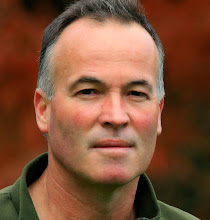
Dropping poison from the sky is an indiscriminate form of pest control. How is anyone supposed to control where it ends up, and what eats it?
1080 baits regularly fall in rivers and streams and are eaten by animals such as koura (freshwater crayfish) and eels. Animals that have consumed 1080 sometimes die and decompose in the water, or are eaten by other animals.
Contaminated water washes over watercress which grows down the sides of streams. These foods are regularly harvested by Maori, who also use this water for their water supply. And trampers and tourists unwittingly wash and drink from these streams without knowing that one of the most 'banned' poisons in the world is in there.
1080 poison safety instructions state clearly that the poison is lethal and that poisoned animals should be buried or removed so that there is no risk of further contamination or secondary poisoning. Photos of dead animals in waterways prove that no one takes this requirement seriously.
Surely a department that is devoted to conservation should be focused on preserving the wellbeing of our wildlife, our waterways, and our wilderness areas. Not on poisoning it.
1080 baits regularly fall in rivers and streams and are eaten by animals such as koura (freshwater crayfish) and eels. Animals that have consumed 1080 sometimes die and decompose in the water, or are eaten by other animals.
Contaminated water washes over watercress which grows down the sides of streams. These foods are regularly harvested by Maori, who also use this water for their water supply. And trampers and tourists unwittingly wash and drink from these streams without knowing that one of the most 'banned' poisons in the world is in there.
1080 poison safety instructions state clearly that the poison is lethal and that poisoned animals should be buried or removed so that there is no risk of further contamination or secondary poisoning. Photos of dead animals in waterways prove that no one takes this requirement seriously.
Surely a department that is devoted to conservation should be focused on preserving the wellbeing of our wildlife, our waterways, and our wilderness areas. Not on poisoning it.







So why isn't DoC required to remove or bury animal carcasses when they're contaminated with 1080 poison?
ReplyDeleteThis is an excellent question. The Department of Conservation are required to remove, bury deeply, or burn all carcasses of animals killed by 1080. But they ignore the manufacturer's warnings, or manipulate the labeling, once it arrives in NZ.
ReplyDeleteIf DoC were to follow manufacturer's requirements, they wouldn't be able to use 1080, simply because it is impossible to locate these unfortunate animals.
DoC are highly irresponsible with their use of this deadly toxin. Take one example - the endangered, curious and opportunistic Weka.
This likable bird, prowls the forest floor in search of dead rats, birds, possums, pigs, deer, and any other poisonous animal carcass it thinks it is lucky enough to find. This carrion feeding bird then begins feasting on its toxic meal, invites a few friends over, then returns to its nest to feed some to its fledglings (chicks). It is unknown to what degree the environment is being contaminated, but it is extensive.
This is only one example of what is happening out there. There are many more.
What a disgrace New Zealand! I am ashamed and embarrassed that I am aware this is going on in our forests, and that we continue to call ourselves leaders in conservation. We are leaders in deception! Clyde Graf.